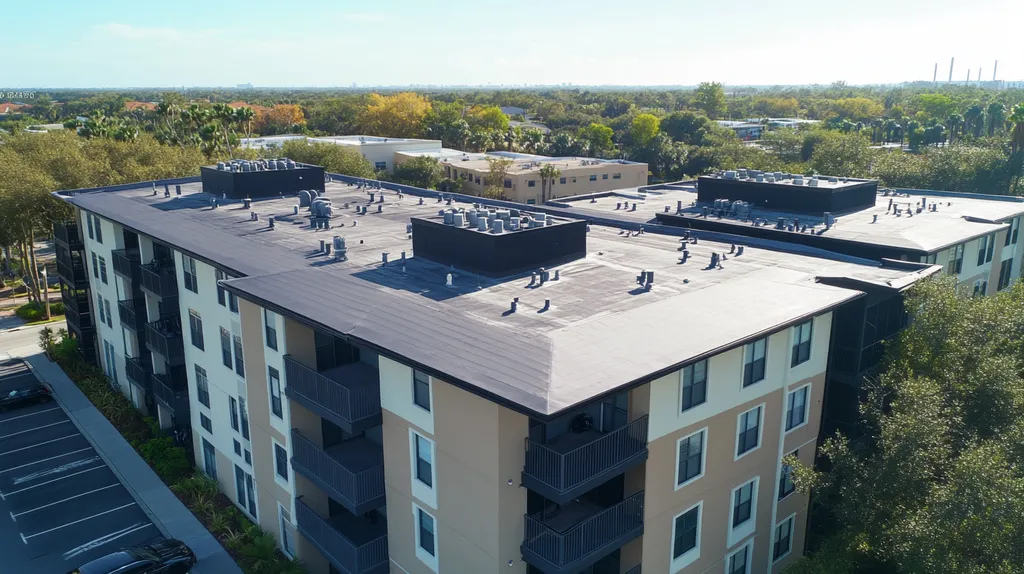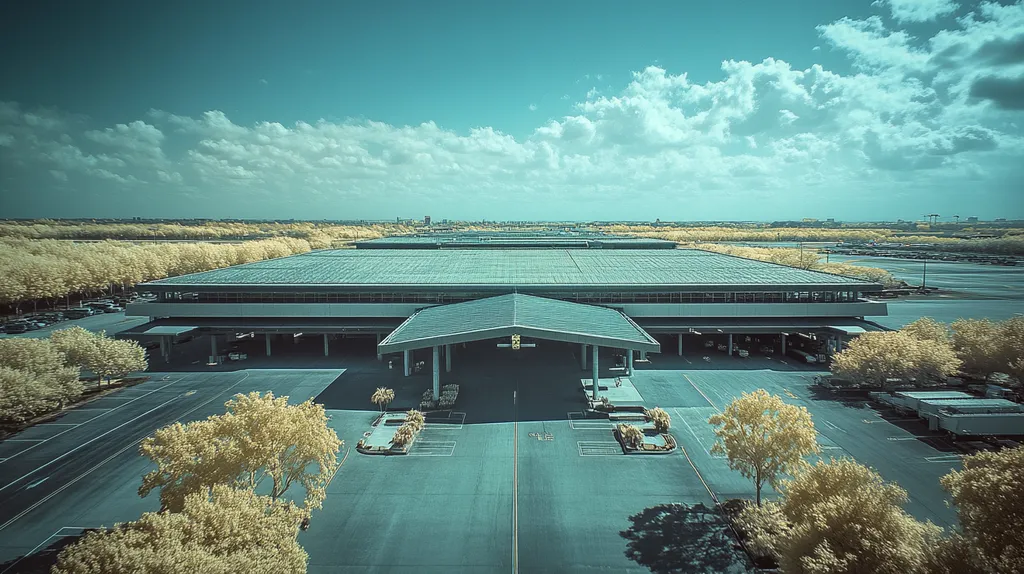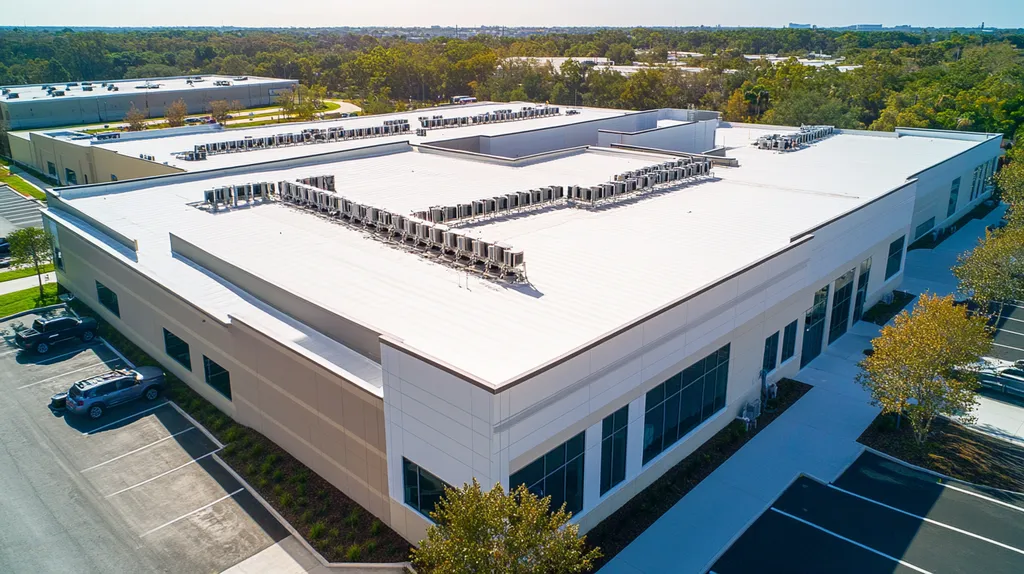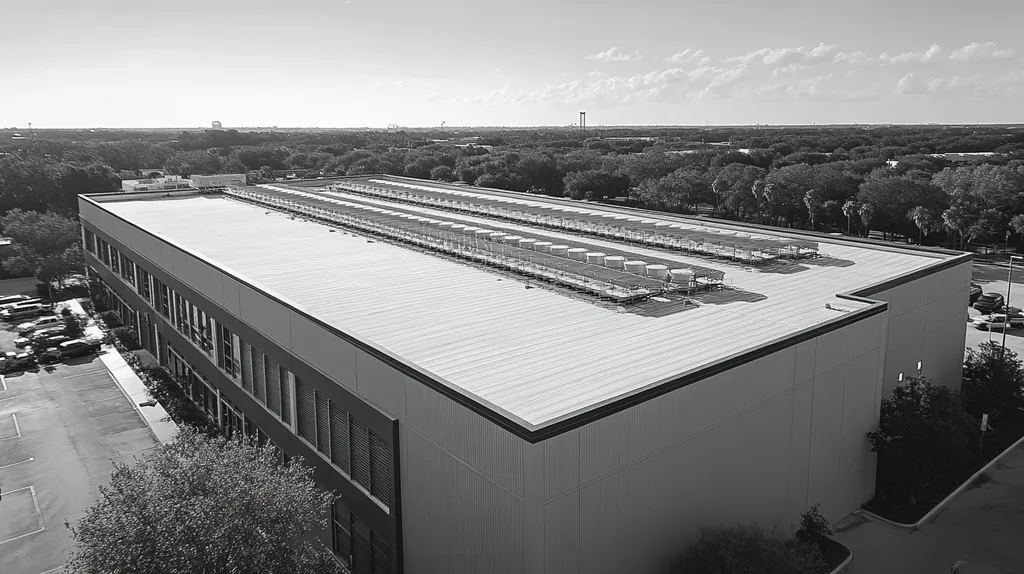Welcome to today’s Battle Royale featuring two roofing heavyweights: “Reflective Roof Coatings” in the east corner versus “Ceramic Roof Coatings” in the west!
Tonight’s showdown pits these contenders against each other across six punishing rounds designed to test every aspect of their performance for Energy Efficiency for Commercial Roofs.
At stake? Millions in potential costs, decades of building protection, and the critical performance demands of modern commercial and industrial facilities.
Our professional judging panel will evaluate each round on technical merit, real-world performance, and value delivery. After all six rounds, we’ll declare our ultimate champion.
Ladies and gentlemen, facility managers and building owners… it’s time to rumble!
ROUND 1: INITIAL COSTS & INSTALLATION
In today’s commercial roofing arena, the battle between reflective and ceramic coatings isn’t just about keeping buildings cool – it’s about cold, hard cash. With energy costs soaring faster than a thermal updraft and sustainability mandates tightening like a torque wrench, property owners can’t afford to make the wrong choice. The U.S. Department of Energy estimates that roofing decisions can impact up to 40% of a building’s cooling costs, making this choice more critical than ever.
Material Expenses
Let’s cut through the coating confusion with some real numbers. Reflective coatings typically run $1.50-3.00 per square foot, while ceramic solutions command $2.50-5.00 per square foot – before anyone picks up a roller.
The U.S. Department of Energy FEMP calculated that ENERGY STAR-qualified cool roof products justify a price premium of up to $0.64/ft² through energy savings alone, with top performers delivering lifetime savings of $1.11/ft². (source: U.S. Department of Energy FEMP)
While ceramic manufacturers tout their products’ durability to justify higher costs, reflective coatings deliver comparable performance at lower initial investment.
ADVANTAGE: Reflective Coatings
Installation Complexity
Installing reflective coatings is about as complicated as painting your deck – if your deck was 50,000 square feet and had HVAC units scattered across it. Most crews can knock out application with standard equipment and minimal prep work.
Ceramic coatings, meanwhile, demand more precision than a surgeon with OCD. Their application requires specialized training, equipment, and perfect weather conditions – because Murphy’s Law apparently includes a roofing subsection.
The complexity gap means ceramic installations typically cost 30-40% more in labor alone, making building owners’ accountants twitch.
ADVANTAGE: Reflective Coatings
Project Timeline
Time is money, and reflective coating projects move faster than a caffeinated roofer on a Friday. Most installations wrap up in 2-3 days, minimizing business disruption and reducing exposure to weather risks.
Ceramic coating installations, by contrast, move slower than a turtle in thermal paste. Their multi-step application process can stretch projects to a week or longer, leaving buildings vulnerable to weather events and tenants grumbling about construction noise.
The timeline difference isn’t just about convenience – it’s about risk management and operational continuity.
ADVANTAGE: Reflective Coatings
ROUND 1 WINNER: Reflective Roof Coatings
ROUND 2: DURABILITY & LIFESPAN
When it comes to commercial roofing, durability isn’t just about avoiding leaks – it’s about protecting millions in assets and operations. While marketing materials promise eternal life for every coating, the reality is that environmental stress, UV exposure, and foot traffic wage a constant war against your roof’s defensive line. The stakes? Emergency repairs can cost 10 times more than planned maintenance, making coating longevity a critical battlefield.
Weather Warriors
Reflective coatings enter the ring with impressive flexibility, expanding and contracting through temperature swings like a yoga master. Their elastomeric properties help prevent cracking and peeling, particularly crucial in regions where thermometers ping-pong between extremes.
However, these coatings can struggle with ponding water and may require reapplication every 10-15 years. Think of them as marathon runners – great endurance but occasional need for recovery.
Ceramic coatings, meanwhile, laugh at weather like a bouncer at a nightclub. Their inorganic composition resists degradation from UV exposure and chemical attack, often maintaining performance for 20+ years.
ADVANTAGE: Ceramic Coatings
Traffic Tolerance
Reflective coatings show their soft underbelly when it comes to foot traffic and mechanical abuse. Regular maintenance paths can wear through like your favorite sneakers, requiring touch-ups and creating weak points.
Ceramic coatings strut their stuff here, with hardness ratings that would make a diamond jealous. Their resistance to abrasion and puncture means maintenance crews can stomp around like Godzilla without leaving a mark.
For buildings with frequent roof access or equipment service needs, this durability difference isn’t just convenient – it’s mission-critical.
ADVANTAGE: Ceramic Coatings
Long-Term Performance
A coating with 86% solar reflectance and 90% thermal emittance could save approximately 25.5 kWh m−2 of HVAC energy in Phoenix, equivalent to about 23% savings. However, reflective coatings typically see performance degradation over time as dirt and wear take their toll. (source: ASME Sustainable Buildings Journal)
Ceramic coatings maintain their protective properties longer, with minimal degradation even after decades of service. Their stable performance means more predictable energy savings and fewer surprise maintenance bills.
While both options can deliver impressive lifespans with proper maintenance, ceramic’s stability gives it the edge in long-term reliability.
ADVANTAGE: Ceramic Coatings
ROUND 2 WINNER: Ceramic Roof Coatings
ROUND 3: PERFORMANCE FACTORS
In the high-stakes world of commercial roofing, performance isn’t just about keeping the rain out – it’s about protecting profit margins thinner than a worn-out membrane. With utility costs rising faster than summer temperatures in Phoenix, choosing the wrong coating can turn your energy budget into a financial sinkhole. Studies show poor roofing choices can bloat cooling costs by up to 40%, making performance metrics more critical than your building’s structural integrity.
Heat Reflectivity
When it comes to keeping buildings cool, reflective coatings strut onto the scene like a mirror in the desert. Their highly engineered surfaces bounce back up to 85% of solar radiation, turning your roof from a heat magnet into a cosmic rejection slip.
These coatings can slash cooling costs by up to 30% in sun-belt regions, though performance tends to decline faster than your IT department’s patience with Windows updates.
Ceramic coatings bring more tricks to the thermal table than a physics textbook. Their microscopic hollow spheres don’t just reflect heat – they actively disperse it like bouncers breaking up a rooftop party.
A coating with 86% solar reflectance and 90% thermal emittance could save approximately 25.5 kWh m−2 of HVAC energy in Phoenix, equivalent to about 23% savings. (source: ASME Sustainable Buildings Journal)
ADVANTAGE: Ceramic Coatings
UV Resistance
Reflective coatings tackle UV rays like a boxer who’s great in early rounds but fades in the championship rounds. Their initial protection is impressive, but degradation starts faster than management’s commitment to “casual Friday.”
These coatings typically need refreshing every 5-7 years to maintain peak UV resistance, making them more high-maintenance than a Hollywood celebrity’s contract rider.
Ceramic coatings handle UV exposure like they’re wearing industrial-strength sunscreen. Their inorganic composition means UV rays bounce off them like complaints off your facilities manager.
The ceramic molecular structure maintains its protective properties longer than a government committee meeting, often lasting decades without significant degradation.
ADVANTAGE: Ceramic Coatings
Weather Endurance
Reflective coatings handle weather changes like a mood ring – they’re flexible but somewhat unpredictable. Their elastomeric properties help them stretch and recover through temperature swings, but extreme conditions can leave them looking rougher than Monday morning coffee.
These coatings particularly struggle with ponding water, which can collect like bitter memories of cheap contractor bids.
Ceramic coatings treat weather like spam email – they just ignore it. Their advanced formulation creates a barrier tougher than your building’s security system, shrugging off everything from acid rain to windborne debris.
When other coatings are showing their age like a forgotten lunch in the break room fridge, ceramic coatings keep performing like they just came off the production line.
ADVANTAGE: Ceramic Coatings
ROUND 3 WINNER: CERAMIC ROOF COATINGS
ROUND 4: MAINTENANCE REQUIREMENTS
While coating manufacturers love to hype their products’ set-it-and-forget-it qualities, reality hits harder than a leaky roof during monsoon season. With energy costs climbing faster than maintenance crews up ladders, neglected coatings can transform from energy savers into money pits. The Department of Energy estimates poorly maintained roofs waste up to 40% more energy than their well-maintained counterparts.
Cleaning Requirements
Reflective coatings demand more pampering than a spa day celebrity. Their performance drops faster than stock prices during earnings season when dirt, debris, and urban grime settle in for an extended stay.
Monthly inspections and quarterly cleanings keep these surfaces reflecting sunlight instead of absorbing heat. Skip the maintenance schedule, and your energy bills will climb higher than your insurance premiums after a claim.
Ceramic coatings laugh at dirt like a bouncer at bad fake IDs. Their textured surface actively resists dust accumulation, while their inorganic composition means fewer cleaning sessions than your building’s windows.
ADVANTAGE: Ceramic Coatings
Repair Protocols
A coating with 86% solar reflectance and 90% thermal emittance could save approximately 25.5 kWh m−2 of HVAC energy in Phoenix, equivalent to about 23% savings – but only if maintained properly. Reflective coatings need touch-ups more often than your IT department’s software patches. (source: ASME Sustainable Buildings Journal)
Every scuff, scrape, and maintenance path degrades performance faster than workplace motivation during budget cuts. Repairs require perfect weather conditions and specialized materials that cost more than your facility manager’s monthly coffee budget.
Ceramic coatings handle damage like a veteran security guard – they rarely need backup. Their durable composition resists mechanical abuse better than your building’s spam filter blocks chain emails.
ADVANTAGE: Ceramic Coatings
Long-Term Upkeep
Reflective coatings demand reapplication every 7-10 years, like clockwork with an expensive attitude. Each refresh costs nearly as much as initial installation, making CFOs twitch more than during tax season.
The performance degradation between recoats means your energy savings graph looks like a ski slope – and not the beginner-friendly kind. Building owners need iron-clad maintenance budgets and nerves of steel.
Ceramic coatings age better than fine wine, often lasting 20+ years without major intervention. Their stable performance means predictable maintenance schedules and fewer emergency calls to your roofing contractor.
ADVANTAGE: Ceramic Coatings
ROUND 4 WINNER: Ceramic Roof Coatings
ROUND 5: SUSTAINABILITY CREDENTIALS
In today’s commercial real estate market, sustainability isn’t just about earning green building certifications – it’s about avoiding financial extinction. With regulators wielding environmental mandates like Thor’s hammer and utility costs rising faster than summer temperatures in Death Valley, choosing the wrong roof coating can transform your environmental compliance strategy into a Greek tragedy.
Lifecycle Impact
Reflective coatings strut into the sustainability scene like solar-powered superheroes. Their manufacturing process consumes less energy than your break room microwave, while their installation creates fewer emissions than a Prius convention.
These coatings deliver immediate environmental returns through reduced cooling loads, though their performance tends to degrade faster than workplace motivation during budget cuts. Regular reapplication means more materials heading to landfills over time.
Ceramic coatings take more energy to produce than a cryptocurrency mining operation. However, their decades-long lifespan means fewer replacement cycles and less waste generation over time.
Their stable performance keeps buildings efficient longer than most IT hardware warranties, making the environmental investment more predictable.
ADVANTAGE: Ceramic Coatings
Green Building Compliance
Reflective coatings slide through environmental regulations smoother than expense reports during tax season. Their low-VOC formulations and energy-saving properties tick more green building boxes than a sustainability consultant’s checklist.
These coatings contribute to LEED points faster than caffeinated contractors on overtime, particularly in the energy efficiency and heat island mitigation categories. Their water-based chemistry makes disposal about as complicated as recycling office paper.
Ceramic coatings sometimes struggle with environmental compliance like interns with the copy machine. Their complex chemistry can trigger more regulatory red flags than an OSHA inspection.
While manufacturers are greening their formulations faster than millennials adopt plant-based diets, ceramic coatings still face more scrutiny than a CFO’s travel expenses.
ADVANTAGE: Reflective Coatings
Carbon Footprint
Reflective coatings slash building carbon emissions like an overzealous budget committee. Their high solar reflectance and thermal emittance properties reduce cooling loads more effectively than unplugging the CEO’s personal mini-fridge.
The U.S. Department of Energy FEMP calculated that ENERGY STAR-qualified cool roof products can reduce energy consumption enough to justify a price premium of up to $0.64/ft², with top performers delivering lifetime savings of $1.11/ft². (source: U.S. Department of Energy FEMP)
Ceramic coatings play the long game in carbon reduction like a pension fund manager. Their superior durability means fewer manufacturing cycles and transportation emissions over decades of service.
Their stable thermal performance keeps HVAC systems running as efficiently as accounting software during tax season.
ADVANTAGE: Reflective Coatings
ROUND 5 WINNER: Reflective Roof Coatings
ROUND 6: SPECIALIZED APPLICATIONS
In the high-stakes world of commercial roofing, specialized applications separate the winners from the warranty claims. With building energy costs soaring higher than a thermal updraft and sustainability mandates tightening like a torque wrench, choosing the wrong coating for your specific needs can transform your energy savings into a financial black hole.
High-Temperature Applications
Reflective coatings dominate scorching environments like a polar bear in an ice cream shop. Their highly engineered surfaces reflect up to 85% of solar radiation, turning potential heat traps into thermal rejection machines.
These coatings particularly excel in urban heat islands, where surrounding concrete and asphalt try to cook buildings like a commercial pizza oven. Their performance in extreme heat makes them the go-to choice for warehouses, retail centers, and industrial facilities in sun-belt regions.
Ceramic coatings leverage innovative particle technology to create insulative barriers against heat transfer. Their specialized formulation can reduce energy consumption by 20% to 50%, significantly outperforming typical reflective coating savings of 15%. (source: Roofing Contractor)
ADVANTAGE: Ceramic Coatings
Climate-Specific Performance
Reflective coatings show their limitations faster than a summer intern’s attention span when dealing with varied climate conditions. Their effectiveness drops dramatically in regions where heating costs outweigh cooling expenses.
These coatings can actually increase energy consumption in cold climates by reflecting valuable solar heat gain during winter months. Think of them as wearing sunscreen in a snowstorm – technically protective, but missing the point.
Ceramic coatings adapt to seasonal changes like a chameleon with an engineering degree. Their insulative properties work year-round, reducing heat gain in summer while retaining warmth in winter.
ADVANTAGE: Ceramic Coatings
Surface Compatibility
Reflective coatings play nice with more roof types than a diplomatic negotiator. Their flexible formulations adhere effectively to modified bitumen, single-ply membranes, and metal roofing systems.
These coatings handle substrate variations better than IT handles software updates. Their forgiving nature makes them ideal for retrofit projects where original roofing materials might be as diverse as a project planning committee.
Ceramic coatings demand more substrate preparation than a space shuttle launch. Their specialized chemistry requires perfect surface conditions and can be pickier about compatible materials than a food critic at a fast-food restaurant.
ADVANTAGE: Reflective Coatings
ROUND 6 WINNER: TIE
AND THE WINNER IS…
After six grueling rounds of technical analysis, with millions in energy costs and decades of building protection on the line, we have our verdict!
In a split decision that had our judges reaching for their calculators, CERAMIC ROOF COATINGS claims victory with three rounds won to Reflective’s two (and one draw)!
Ceramic coatings dominated the crucial categories of Durability & Lifespan, Performance Factors, and Maintenance Requirements, showcasing superior staying power and consistent long-term performance that keeps delivering results long after reflective coatings need refreshing.
But don’t count reflective coatings out! They remain the undisputed champion of quick installation and lower initial costs. For properties with tight budgets or short-term improvement goals, reflective coatings still pack a powerful punch.
*Important Notice: Every building faces unique challenges based on location, usage patterns, and local climate conditions. While this analysis provides general guidance, it cannot account for all variables. Property owners should consult qualified roofing professionals who can evaluate their specific situation and recommend appropriate solutions.*
Ladies and gentlemen, in the high-stakes world of commercial roofing, remember: The real victory comes not from blindly following the champion, but from matching your building’s specific needs to the right contender’s strengths. Choose wisely – your energy bills are counting on you!
FREQUENTLY ASKED QUESTIONS
Q. What are the initial costs for a commercial roof coating?
A. Reflective coatings generally cost $1.50-3.00 per square foot, while ceramic coatings range from $2.50-5.00. Installation expenses can make a significant difference in your budget, so it’s crucial to consider both initial and long-term costs before deciding.
Q. How do the durability features compare for commercial roofs?
A. Ceramic coatings usually boast longer lifespans, often exceeding 20 years, compared to reflective coatings’ 10-15 years. The resistance to UV degradation and environmental factors makes ceramic coatings more suitable for long-term protection and investment.
Q. Which type of coating performs better in energy efficiency for industrial roofs?
A. Ceramic coatings generally outperform reflective options regarding energy efficiency over the long run, particularly due to their ability to maintain performance despite environmental wear. Their higher durability means fewer unexpected bills related to energy waste.
Q. What are the maintenance requirements for a ceramic roof coating?
A. Ceramic coatings typically require less frequent maintenance than reflective options. Their resilience minimizes the need for repairs and cleaning, leading to potentially lower long-term upkeep costs, which is music to facility managers’ ears.
Q. Are reflective roof coatings sustainable for commercial properties?
A. Reflective coatings generally produce fewer emissions during manufacturing and can significantly improve energy efficiency. However, frequent replacements could contribute to landfill waste over time, making the sustainability landscape a bit murky.
Q. How does climate affect the choice of coating for industrial roofs?
A. Climate plays a major role in coating performance. In hotter areas, reflective coatings excel, while ceramic options provide better heat retention in colder environments, making it crucial to evaluate local weather patterns before committing.
Q. Are there any specialized applications best for commercial roofs?
A. Yes, reflective coatings shine in high-temperature applications, while ceramic coatings are better for flexible climates. For specific needs, such as industrial settings with extreme temperatures, choosing the right coating could be a game-changer for energy efficiency.









